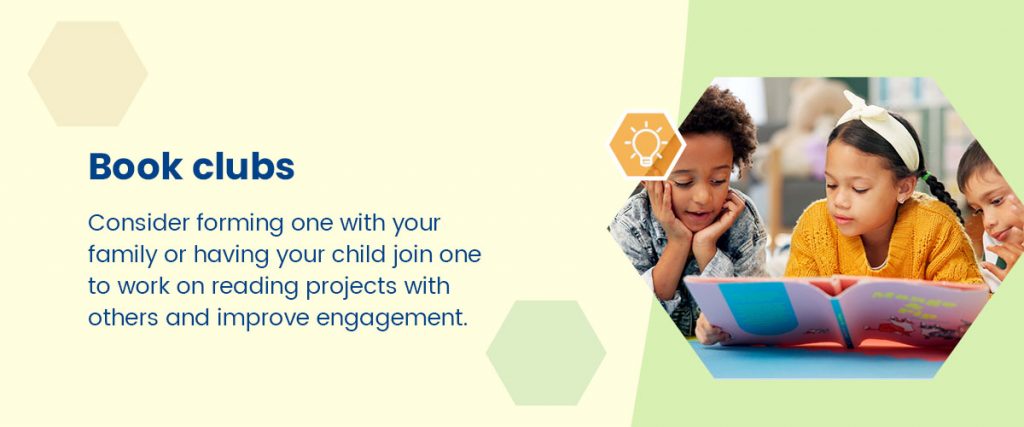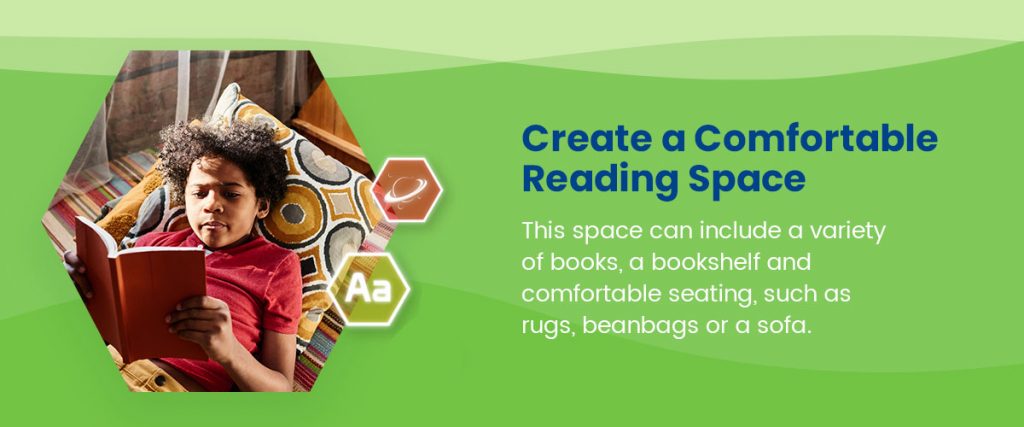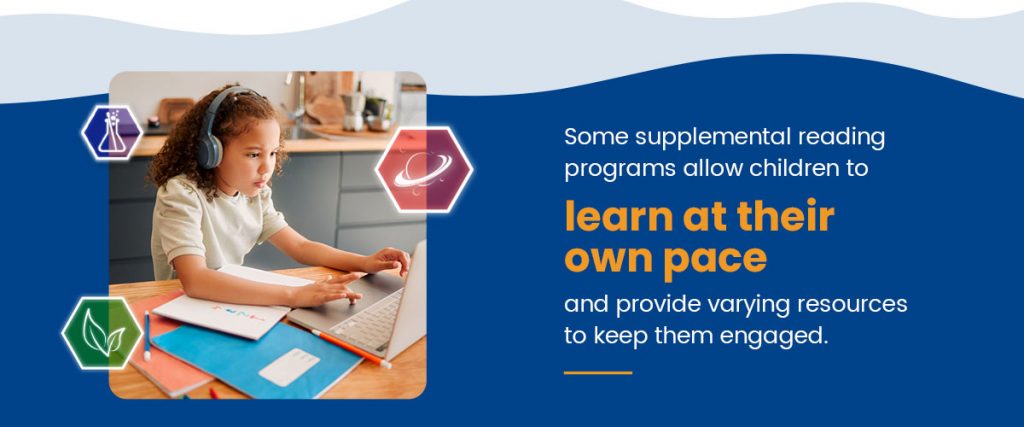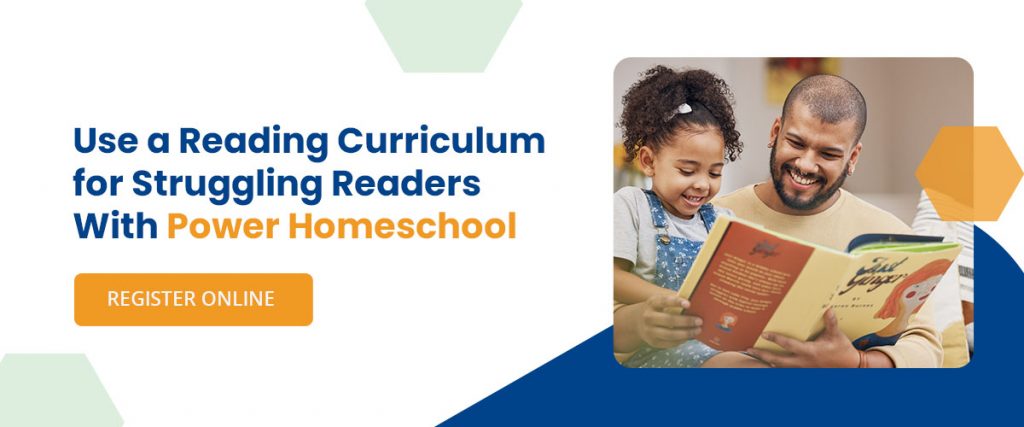Literacy skills are fundamental, whether for completing tests, reading traffic signs, choosing food off a menu or checking bank statements. Therefore, it is important for parents to check in on their children and ensure they feel confident about their reading skills.
There are various ways parents can help struggling readers, whether the student is homeschooled or learning in a traditional school setting. You can try reading interventions, explore strategies for building reading skills and find reading programs for struggling readers.
Reasons Why a Child Might Struggle With Reading
There are various reasons why some readers might struggle to build their skills. Some include:
- Lack of phonemic awareness: Phonemic awareness is the ability to recognize and manipulate the individual sounds in spoken words. If a child does not understand this, they may have issues associating sounds with letters, hindering their reading abilities.
- Learning English as an additional language: It can be challenging for English language learners to adapt to the new rules. This becomes more challenging when they do not get constant practice at home with others who speak English.
- Lack of foundational knowledge: Some children have less exposure to and experience with vocabulary, fluency, verbal interactions and phonological awareness. This may make it challenging to meet grade-level requirements with understanding written texts.
- Learning difficulties: In some cases, attention difficulties and learning disabilities can affect one’s ability to learn and read. Some examples of learning disabilities that impact reading abilities include dyslexia, visual impairments and auditory impairments.
How to Recognize Struggling Readers
Reading issues in children can manifest in various ways, and understanding them can help you learn how to help a struggling reader. Here are 12 common signs that your child may be having difficulty reading:
- Avoiding reading
- Issues with decoding words
- Lack of comprehension
- Labored reading
- Spelling difficulties
- Lack of confidence related to their reading abilities
- Higher achievements in written language compared to oral reading
- Lack of fluency
- Frequent guessing
- Skipping or substituting words
- Difficulty understanding written instructions
- Lack of progress
5 Reading Interventions for Struggling Readers
If you suspect your child’s reading skills are below grade level, it may help to implement a reading intervention. A reading intervention includes targeted instruction and additional support that prioritizes building their knowledge to get them back on track. Here are five reading interventions you might implement depending on your child’s improvement areas.
1. Build Vocabulary
Children need to understand words to create meaningful reading experiences. Homeschooling parents can enhance their child’s vocabulary in various ways:
- Teaching academic vocabulary: Teach your child the technical meanings of words in academic resources.
- Teaching language for discussing books: Explain vocabulary that will be used regularly when reading books.
- Building morphological awareness: Break down words and teach your child about suffixes, prefixes, base words and inflectional endings.
- Deepening your child’s knowledge of words used: Expand your child’s understanding of concepts by diving into vocabulary associated with particular topics and genres.
2. Focus on Fluency
If your child has difficulty reading fluently, consider guided oral reading, which involves encouraging them to read aloud. As they read, offer guidance and feedback to keep them on the right track. This reinforces confidence as your child improves.
It also helps to consider assisted reading. This involves allowing your child to read aloud in sync with your reading or computer reading. Echoing text at the same time may help them improve fluency.
3. Encourage Scaffolded Independent Reading Practices
Some children may learn better when they explore multiple reading practice activities throughout the week. Doing so maintains engagement and helps students enjoy the learning process. Some examples of interactive and independent reading activities include:
- Comprehension quizzes: These require students to read books and complete quizzes on them.
- Digital classroom libraries: Support resources like online dictionaries and highlighting tools keep children engaged and informed while reading.
- Book clubs: Consider forming one with your family or having your child join one to work on reading projects with others and improve engagement.
- Self-agency: Give your child a choice about the genres they read within their reading level. Reading can be more fun when they are genuinely interested in the topic!
- Reading games: You can also mix in online reading games, which make reading and learning concepts more fun.

4. Try In-Depth Word Study
To improve foundational literacy skills, have short lessons to help your child develop phonics skills. Start with simpler concepts and move up to more complex ones as they gain a solid understanding. For example, you might spend one lesson improving phonemic awareness. This involves teaching your child how to blend, segment and manipulate words out loud before doing so on paper. You can then move on to syllable types, spelling patterns and decoding word patterns.
5. Build Comprehension
While building your child’s vocabulary can help improve comprehension, other strategies can promote the full understanding of a text. For example, during a reading lesson, prompt your child to recall a time they experienced something similar to the passage they read. You can also ask them to predict what will happen next or summarize the basics of the story. In addition to improving comprehension and keeping students engaged, this helps to ask them to visualize the scene as they read to create a more immersive reading experience.
8 Reading Strategies for Struggling Readers
Here are eight simple and valuable strategies for building reading skills.
1. Show and Encourage a Love for Reading
Does your child feel discouraged because of their reading struggles? This may cause them to want to avoid reading altogether or express a dislike for it. Help them grow to love reading by showing how enjoyable it can be.
Try to read when you have free time, tell them about the exciting stories you’ve read and express how exciting it is to explore new genres. Doing so may get them curious and encourage them to try reading for fun. Daily practice can help them improve their reading skills.
2. Create a Comfortable Reading Space
Your child may want to practice reading more when there is a space created specifically for it. Create a safe and relaxing reading environment in your home. This space can include a variety of books, a bookshelf and comfortable seating, such as rugs, beanbags or a sofa. You can even incorporate more unique choices like a hammock or blanket fort. Read together as a family in this room, perhaps before bed.

It’s important for this space to be judgment-free. Regardless of your child’s progress pace, they should always receive encouragement and support. This helps ensure that your child does not feel pressured while reading aloud and becomes more open to reading more often.
3. Use Educational Games
Reading can become more engaging with games and educational apps. Game-based learning platforms can be more engaging than traditional books for some learners because they use colors, visuals and bold fonts. This helps maintain children’s attention, and they may be more likely to retain skills they learn while playing.
Some nondigital game options you can play with your family include Scrabble, Boggle and Bananagrams. You can also make up your own game. For example, have your child choose a random word in the dictionary to learn about. Ask them to see how many sentences they can use the word in, and give them a prize depending on how often they can use the word within the week.
4. Celebrate Wins
Your child may be less motivated and engaged when they struggle with reading. Help them practice a positive growth mindset and a can-do attitude. You can reinforce this by complimenting them for small achievements. You can even give them stickers or badges for these wins. When they conquer milestones, give them bigger rewards, such as their favorite snack or a dinner out. This motivates them to continue working hard to make new achievements. It helps to put up a poster with their achievements so they can see their progress.
However, keep in mind that you’ll want to transition toward intrinsic motivation as your child gets older. This involves praising effort — not just results. Using too many external rewards may diminish a child’s internal drive, and a constant need for rewards can cause them to expect a prize for every achievement.
5. Personalize the Learning Plan
Some children may need more time on certain topics than others. You can help by personalizing your child’s learning plan using a homeschool program. This can be a valuable add-on to an existing homeschool curriculum or as an afterschool supplement to traditional schooling.

Some supplemental reading programs allow children to learn at their own pace and provide varying resources to keep them engaged. These might include visual resources, text-to-speech readers or audiobooks. If your child has a learning disability, you can find special needs homeschooling curriculums that can provide a much more personalized learning experience.
6. Build Their Knowledge
To improve your child’s comprehension of school readings, you can build their knowledge of experiences and certain words. Doing so may make it easier for your child to connect what they read about to things they already know. You can build a language-rich environment by using words you know will frequently appear in your child’s current or next read. You can also try listening to podcasts, watching movies or listening to audiobooks together, which can build their language vocabulary.
Another engaging way to build their vocabulary is to give them new experiences through field trips. For example, if their next book is about a young football player, you can teach them how to play or go to a game together to build their basic knowledge of the sport.
7. Use Visuals
Some children may understand literacy concepts better through visual representations. One way to incorporate these is by making or printing posters with literacy rules your child struggles with. You can put this up in the room where they usually do their schoolwork as a constant reminder. You may improve their memory retention by encouraging them to make and decorate the poster with you.
Additionally, you can create graphic organizers like story maps, outlines and diagrams to help your child visualize the content and structure of a text. These help break down texts into manageable bits of information so that your child knows which aspects to focus on. Flashcards with pictures for vocabulary practices can also be a helpful resource.
8. Use Manipulatives
Does your child often understand concepts better through hands-on learning and doing things by themselves? This might mean your child is a kinesthetic learner. Kinesthetic learners typically need to physically perform actions, such as doing science projects, to understand and remember how concepts work.
For reading lessons, you can use manipulatives, like letter tiles, to help your child visualize words, feel the letters and put them together on their own. This may enhance their memory retention.
How to Choose a Reading Program for Struggling Readers
If your child needs comprehensive assistance with their reading, it may help to implement a supplemental reading program in addition to their current schoolwork. Here are five things to consider when choosing a reading program for your child:
- Self-paced learning and flexibility: Look for a supplemental reading curriculum that allows for flexibility and self-paced learning. This allows students to learn at a pace that matches their needs. They can complete lessons at any time that suits their personal and family schedule.
- Engagement and interactivity: It’s helpful to choose a reading program that offers engaging and interactive content. Make sure to inquire about whether it includes hands-on exercises, video lessons and interactive content.
- Amount of resources: Check whether the program you want to implement caters to the different learning styles. This helps ensure that your child has an assortment of resources to choose from while learning. These can include e-books, video-based courses, supplement materials, retention drills and practice challenges.
- Adaptive learning programs: Adaptive education technology provides tasks and lessons that match your child’s skill and knowledge level. You might want to opt for a program with technology that only moves on to more complex concepts after a student fully understands current concepts.
- Progress tracking: Some reading programs may offer access to a platform for tracking and monitoring your child’s progress. This tool allows you to review the content of your child’s lessons and keep your child on the right track.
Use a Reading Curriculum for Struggling Readers With Power Homeschool
Are you considering incorporating a supplemental reading curriculum to progress your child’s reading skills? Whether you’re a homeschooling parent or need a program to assist your traditionally schooled child as an afterschool option, Power Homeschool offers a supplemental reading curriculum that may help. Power Homeschool is the official provider of hundreds of Acellus® courses for students from pre-kindergarten through 12th grade.
Our online homeschool programs are flexible and self-paced to prioritize your child’s unique learning needs and lifestyle. The homeschool reading curriculum focuses on vocabulary building, fluency, comprehension, writing and spelling. We also offer a range of interactive resources to support different learning styles and student monitoring programs.
To learn more, browse our language arts curriculum and our English Language Learning curriculum today.



